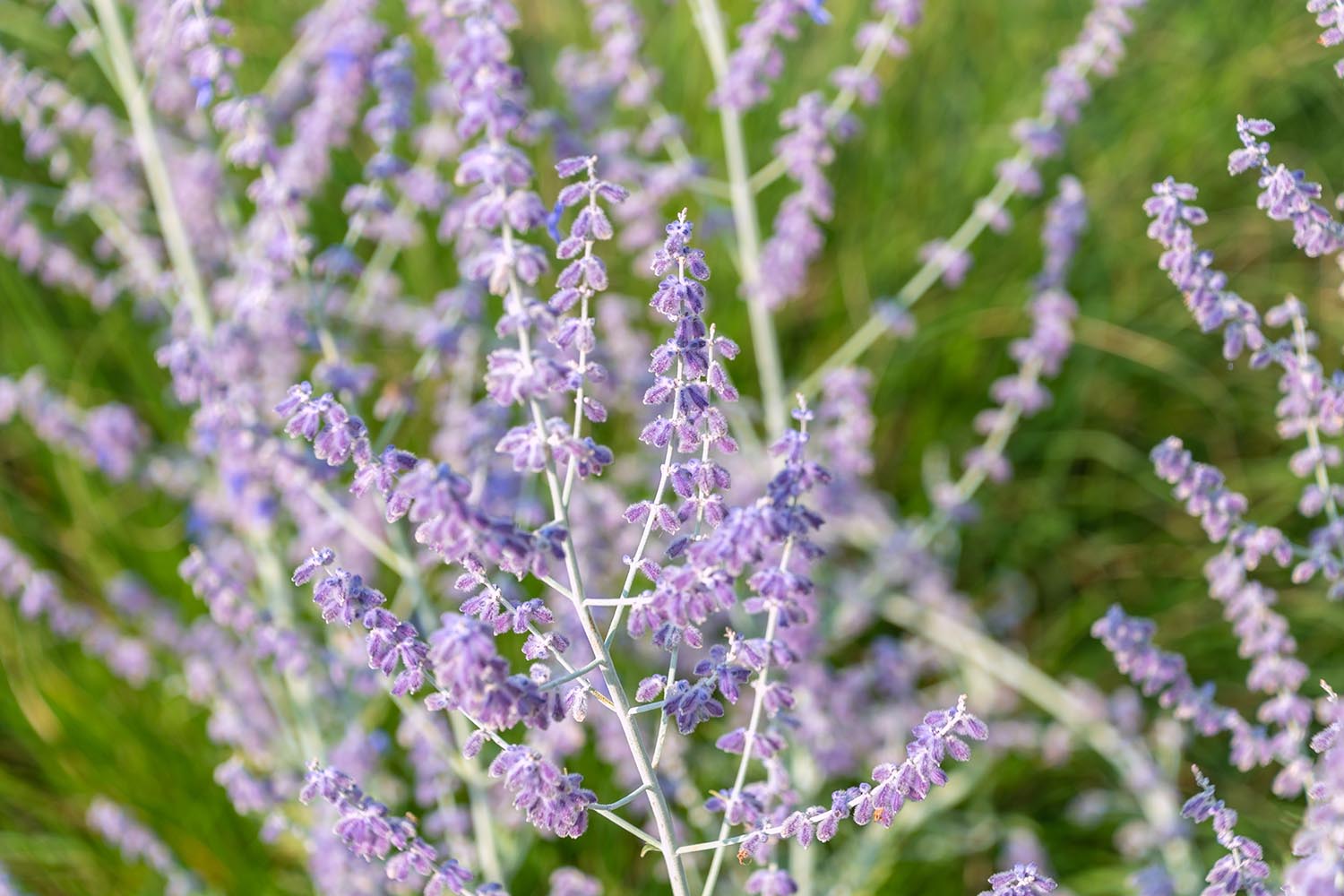By MIKE RALEY WPTF Weekend Gardener
I planted some Russian Sage (Salvia yangii) decades ago. Alas, I can’t remember when it faded into oblivion. It is really not native to Russia and hails from Central Asia, ie, Afghanistan, Tibet. The name derives from the genus of the plant which is “perovskia” and it was named for the Russian General V.A. Perovski in the 1800’s. I don’t know why, I suppose he was some sort of wise person or “sage”.
I do love the color contrast between the silvery-green foliage and the bluish-lavender flowers, so I am inspired to plant a new batch of this perennial. You see, on my daily walk as I take note of my neighbor’s landscapes, I attempt to assess the variety of plants with the seasonal progress and changes of each. My friend Charlie has a lovely yard of zoysia interspersed with interesting flowers, shrubs and trees. He has a group of Russian Sage planted in full sun near the sidewalk. This summer on my late afternoon walks I was struck by the sight of sleeping bumble bees. I know they take naps and sleep overnight. I, however, had never paid attention to them clinging to a plant in small colonies. I’ve always heard they can be stroked gently, but I’ve just never dared to attempt it. I don’t want to disturb them. They work hard everyday and deserve their rest. At any rate, the sage and bumble bee combination paints quite a picture. Now I must try my luck once again.
Russian Sage requires full sun, (at least 6 hours) to thrive and to give you the full effect of its foliage and flower color which can be subtle from a distance and striking up close. However, planted in mass, this plant can be remarkable. It likes well drained soil which will prevent root rot. Except for this malady, there really nothing else in the way of disease or insect problems with this plant. It is even deer resistant.
Many people plant Russian Sage in the spring when there is abundant inventory at their favorite garden center. Fall is a great time too, when you can often find perennials on sale. Plant your Russian Sage by using a sharp shovel. Anne Clapp and Rufus always recommend that. Dig a hole that is at least twice as wide as the root ball and just as deep. Place your shrub in the hole, gently spreading out the roots, and then backfill to ground level or slightly above and water well. To get your plant off to a good start, incorporate some organic matter in the soil, and cover the root zone with a layer of mulch to help keep the soil cool and moist even though the Russian Sage thrives in the hot weather.
There are a bunch of varieties of Russian Sage from which to choose. Among the favorite cultivars that can be grown successfully in the Tar Heel state are: “Blue Spire”, “ Little Spire”, “Denim ‘N Lace” “Rocket Man”, “Blue Haze”, ”Blue Spire” and “Crazy Blue”.
The North Carolina Extension Gardener Toolbox available online is an extraordinary resource and can supply you with all the information you may need on the Russian Sage or any other plant you can imagine. All of the Cooperative Extension Service folks on the Weekend Gardener swear by this catalog of knowledge. So, to summarize, Russian Sage
is an exceptional, sun loving plant for North Carolina that is named after a Russian general, but is not native to Russia, and bumblebees love this plant for a nap or a long sleep. Go find one for your yard!




